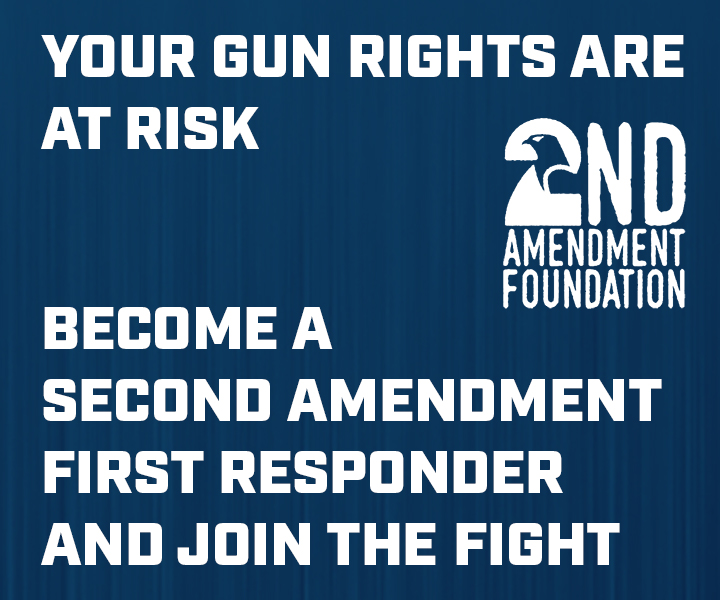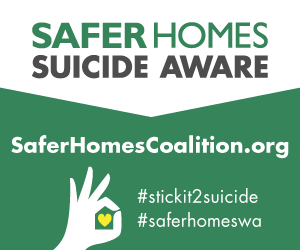
By Tanya Metaksa
What’s New— Trump Administration: First President to address Second Amendment; Attorney General Pam Bondi reorganizing BATFE; Florida: Colon v. BATFE: Case 24-10897: BATFE seeks delay; Sixth Circuit: C.S. v. McCrumb: Case 24-1364: a First Amendment case of a banned hat in school; Reese v. BATFE: Case No. 23-30033: “Ultimately, the text of the Second Amendment includes eighteen-to-twenty-year-old individuals among “the people” whose right to keep and bear arms is protected;” Guedes v. BATFE:Case No. 18-cv-02988: bump stocks;
Trump Administration
Executive Order on Second Amendment
Section 1. Purpose. The Second Amendment is an indispensable safeguard of security and liberty. It has preserved the right of the American people to protect ourselves, our families, and our freedoms since the founding of our great Nation. Because it is foundational to maintaining all other rights held by Americans, the right to keep and bear arms must not be infringed.
Sec. 2. Plan of Action. (a) Within 30 days of the date of this order, the Attorney General shall examine all orders, regulations, guidance, plans, international agreements, and other actions of executive departments and agencies (agencies) to assess any ongoing infringements of the Second Amendment rights of our citizens, and present a proposed plan of action to the President, through the Domestic Policy Advisor, to protect the Second Amendment rights of all Americans.
(b) In developing such proposed plan of action, the Attorney General shall review, at a minimum:
(i) All Presidential and agencies’ actions from January 2021 through
January 2025 that purport to promote safety but may have impinged on the Second Amendment rights of law-abiding citizens;
(ii) Rules promulgated by the Department of Justice, including by the Bureau of Alcohol, Tobacco, Firearms, and Explosives, from January 2021 through January 2025 pertaining to firearms and/or Federal firearms licensees;
(iii) Agencies’ plans, orders, and actions regarding the so-called
“enhanced regulatory enforcement policy” pertaining to firearms and/or
Federal firearms licensees;
(iv) Reports and related documents issued by the White House Office of Gun Violence Prevention;
(v) The positions taken by the United States in any and all ongoing and potential litigation that affects or could affect the ability of Americans to exercise their Second Amendment rights;
(vi) Agencies’ classifications of firearms and ammunition; and
(vii) The processing of applications to make, manufacture, transfer, or export firearms.
Source: WHITE HOUSE, Protecting Second Amendment Rights, EXECUTIVE ORDER, February 7, 2025
The first reaction by the federal government to the above Executive Order came just four days after it was issued. In the case of Colon v. BATFE, DOJ and Garland. On Feb. 11, the Department of Justice filed a motion to Postpone Oral Argument and Hold Appeal In Abeyance. See Colon v. BATFE below.
Office of the Attorney General
Pam Bondi was confirmed by the U.S. Senate on Feb. 4, and was sworn in the following day. Bondi issued her memorandum on BATFE (Bureau of Alcohol, Tobacco, Firearms and Explosives) agents working on immigration on Feb. 5, as part of her “first-day” directives upon being sworn in as Attorney General.
Although the memorandum is not available at this time online, here are two parts that Attorney Mark W. Smith (youtube.com/thefourboxesdiner) put on his channel.
- The Department of Justice is the only federal agency with a name that includes a moral imperative: to do justice. Pursuant to that mission, prosecutors are tasked with protecting the public, enforcing the law in a fair and consistent fashion, and conducting themselves in a manner that promotes respect for the legal system and the rule of law. These tasks require the exercise of discretion. However, prosecutorial discretion is bounded by the Constitution, statutes and case law, state and local ethical requirements, and poly decisions set forth by the President.
- Shifting ATF Resources. To free resources to address more pressing priorities, the Bureau of Alcohol, Tobacco, Firearms and Explosives (ATF) shall shift resources from its Alcohol and Tobacco Enforcement Programs to focus on matters relating to the other priorities set forth herein. No resources shall be diverted from ATF’s regulatory responsibilities, such as federal firearms licenses and background checks.
Source: Office of the Attorney General, Pam Bondi. Feb. 5, 2025
Re: GENERAL POLICY REGARDING CHARGING, PLEA NEGOTIATIONS AND SENTENCING
U.S. Court of Appeals
Florida: Eleventh Circuit
Colon v. BATFE, DOJ and Garland: Case No. 24-10897:
“1. In January 2023, the Bureau of Alcohol, Tobacco, Firearms, and Explosives issued a rule describing how the agency will determine whether firearms with stabilizing braces attached are short-barreled rifles subject to the restrictions of the National Firearms Act. See Factoring Criteria for Firearms with Attached ‘‘Stabilizing Braces,” 88 Fed. Reg. 6478, 6525 (Jan. 31, 2023). Plaintiffs challenged that rule, and the district court entered a preliminary injunction prohibiting the government from enforcing the rule against plaintiffs and others. See Dkt. No. 47, at 51. The government appealed, and this Court has set oral argument for March 5, 2025.
“2. Following a change in administration, on February 7, 2025, President Trump issued an Executive Order titled Protecting Second Amendment Rights. See President Donald J. Trump, Presidential Actions: Protecting Second Amendment Rights (Feb. 7, 2025), https://www.whitehouse.gov/presidential-actions/2025/02/protecting-second- amendment-rights. Among other things, the Order directs the Attorney General to “examine” various “actions of executive departments and agencies” to “assess any ongoing infringements of the Second Amendment rights of our citizens, and present a proposed plan of action to the President, though the Domestic Policy Advisory, to protect the Second Amendment rights of all Americans.” Id. § 2(a)”
The above two paragraphs are from the opening paragraphs of Bondi’s Department of Justice motion to postpone, which was issued on Feb. 12.
Background: Original case: Colon v. BATFE: Case No.: 8-23-cv-00223: Originally filed on Feb. 1. 2023, challenging BATFE’s listing of firearms with attached “stabilizing braces” as short-barrelled rifles subject to the restrictions of the National Firearms Act. An in-person proceeding was heard by Judge Mary S. Scriven regarding the question of the preliminary injunction being sought by plaintiffs. After several more supplemental responses on Ja. 26, 2024, Judge Scriven issued a preliminary injunction against BATFE’s rule in favor of the plaintiffs.
This case was appealed to the US Court of Appeals for the Eleventh Circuit on March 26, 2024, challenging the BATFE regulation that firearms with attached “stabilizing braces” are short-barreled rifles subject to the restrictions of the National Firearms Act. On April 17, 2024, BATFE filed for an extension granted until May 20, 2024. On May 22, the attorney for the amicus brief filed by Brady Center, Giffords, and March for Our Lives filed for appearance. On June 19, 2024, the responding brief was filed.
Michigan: Sixth Circuit
C.S. v. McCrumb: Case 24-1364: On Jan. 30, a three-judge panel heard oral arguments. Mark W. Smith, Second Amendment attorney, @FourBoxesDiner on X.com and the Four Boxes Diner on YouTube.com, made a video covering this case. The brief filed by plaintiff C.S. included the following discussion in support of her First Amendment rights:
“This Court should be under no illusion. The School Officials are asking it to recognize an ‘emotional harm’ exception to the First Amendment, something the Supreme Court never has Countenanced. To be sure, “there are certain well-defined and narrowly limited classes of speech, the prevention and punishment of which have never been thought to raise any Constitutional Problem.” “These include the lewd and obscene, the profane, the libelous, and the insulting or “fighting” words–those which by their very utterance inflict injury or tend to incite an immediate breach of the peace.” But “there’s no generalized ‘hurt feelings’ defense to a high school’s violation of the First Amendment rights of its students.” Even speech designed to be upsetting or Arouse contempt–which C.S.’s speech on her hat certainly was not–is protected, For “if there is a bedrock principle underlying the First Amendment, it is that the Government may not prohibit the expression of an idea simply because society Finds the idea itself offensive or disagreeable.”
They go on:
“Allowing such unsupported ipse dixit to establish the “specific and significant fear of disruption” Tinker requires would write that case out of the books, and the First Amendment out of this Nation’s schools. As the Fourth Circuit explained in a highly analogous situation, a student’s T-shirt stating “NRA” and depicting people pointing rifles was protected because “Tinker requires a specific and significant fear of disruption, not just some remote apprehension of disturbance.”
“Undisputed” or not, the School Officials’ vague, post facto assertion that they feared That C.S.’s wearing the hat would cause a “risk of scuffles” simply does not clear the bar Tinker sets. School Officials “must present facts that might reasonably have led school authorities to forecast substantial disruption of or material interference with school activities or the invasion of the rights of others.” Here, they presented no such facts.
Unfortunately, Smith states in his video that the three-judge panel is “terrible.” So, we now await the verdict.
Background: The original case was filed on May 5, 2022. The case was filed against the principal of Robert Kerr Elementary School for violating a third-grader’s First and Fourteenth Amendment rights. The child wore a hat bearing the test “Come and Take It” with an image of an AR-15 firearm to the school’s “hat day.” This case was initially filed on May 16, 2023, in the US District Court for the Eastern District of Michigan, where the court DENIED C.S.’s motion and ruled in favor of the school district.In conjunction with the Firearms Policy Coalition, the plaintiffs filed an appeal to the US Court of Appeals for the Sixth Circuit on April 4, 2024. On Nov. 6, the appellants (C.S.) filed a reply to the defendant’s brief on Oct. 10. In 2018, the Firearms Policy Coalition sued in a similar case in Nevada, where the student had worn a Firearms Policy T-shirt to school and won a declaratory judgment.
Louisiana: Fifth Circuit
Opinion: Reese v. BATFE: Case No. 23-30033: The opinion was issued on Jan. 30:
“This is a second challenge in our court to the constitutionality of 18 U.S.C. §§ 922(b)(1) and (c)(1), which together prohibit Federal Firearms Licensees from selling handguns to eighteen-to-twenty-year-old adults. In National Rifle Ass’n, Inc. v. Bureau of Alcohol, Tobacco, Firearms, & Explosives, 700 F.3d 185 (5th Cir. 2012) (“NRA I”), this court upheld those provisions. But that decision, which was criticized at the time, see National Rifle Ass’n, Inc. v. Bureau of Alcohol, Tobacco, Firearms, & Explosives, 714 F.3d 334, 341 (5th Cir. 2013) (“NRA II”) (Jones, J., dissenting from denial of rehearing en banc), preceded two recent clarifying Supreme Court opinions on the methodology by which we construe gun regulations under the Second Amendment. We are now compelled to focus intently on the evidence of firearm access and ownership by eighteen-to-twenty-year-olds near and at the founding, and we conclude that (1) NRA I is incompatible with the Bruen and Rahimi decisions of the Supreme Court, and (2) these provisions are inconsistent with the Second Amendment. Accordingly, we REVERSE the district court’s contrary judgment and REMAND for further proceedings consistent with this opinion.”
The three-judge panel found that the federal law banning the sale of firearms to those between the ages of 18 to 20 years of age “not only served in that militia, but were required to serve.” The Court concludes,
“Ultimately, the text of the Second Amendment includes eighteen-to-twenty-year-old individuals among “the people” whose right to keep and bear arms is protected.”
Background: Reese v. BATFE: Case No. 23-30033:
Since the last oral arguments, the following cases have had challenges similar to this case:Lara v. Commissioner Pennsylvania State Police (21-1832), United States v. Rahimi (22-915), and Worth v. Jacobson 2024 WL 3419668 (8th Cir. 2024). The Lara v. Commissioner Pennsylvania State Police case has a petition for certiorari before SCOTUS with a conference date in October. The judges were interested in showing how the Militia Act of 1792 played a part in “establishing that, at a minimum, at a minimum 18, 19, and 20-year-olds are part of the people. They are part of the people who have the right to keep and bear arms.” The hearing recording is available.
Background: Reese v. ATF: Case 6:20-cv-01438-RRS-CBW
This case filed by FPC, NRA, and SAF challenging the ban on licensed handgun sales to law-abiding 18-to-20-year-olds was decided in favor of the ATF on December 21, 2022. The Plaintiffs appealed to the Court of Appeals for the Fifth Circuit on March 31, 2023, and have requested oral argument before the Court. A brief for the appellees (FPC, NRA, and SAF) was filed on May 12, 2023. The US Court of Appeals for the Fifth Circuit heard oral argument on Nov. 7, 2023, before a three-judge panel of Jones, Barksdale, and Elrod.
District Court
D.C. District of Columbia:
Guedes v. BATFE: Case No. 18-cv-02988: After the deadly massacre in Las Vegas on Oct. 1, 2017, then President Trump directed BATFE to take action against bump stocks. On Dec. 26, 2017, BATFE proposed an Advance Notice of Proposed Rulemaking entitled:
Plaintiff Damien Guedes and others challenged the Rule in the US District Court for the District of DC, requesting a temporary injunction; the district court denied the injunction on Feb. 15, 2019, citing the “Chevron” defense. In 2021, the district court granted summary judgment to ATF. The Court of Appeals for the DC Circuit ruled that ATF’s interpretation was the “best” interpretation of the statutory language. A petition for a rehearing en banc was denied. Pro-Second Amendment groups then initiated another litigation, Hardin v. BATFE, against the ATF rule in the US Court of Appeals for the Fifth Circuit. A three-judge panel of the Fifth Circle then reversed the ATF rule in the Fifth Circuit on April 25, 2023. During SCOTUS’s 2023-2024 term, both Guedes v. BATFE: Case No. 22-1222 and Hardin requested cert. On June 5, 2024, SCOTUS denied cert in Hardin and in Guedes wrote:
The petition for a writ of certiorari is granted. The judgment is vacated, and the case is remanded to the United States Court of Appeals for the District of Columbia Circuit for further consideration in light of Garland v. Cargill, 602 U. S. ___ (2024).
Thus the case returned to United States District Judge Dabney L. Friedrich of the US District Court for the District of DC, who ordered on January 15, 2025:
Pursuant to the Declaratory Judgment Act, 28 U.S.C. §§ 2201-2202, it is ORDERED and ADJUDGED that judgment is entered for the plaintiffs. The Court further
DECLARES that the Bureau of Alcohol, Tobacco, Firearms and Explosives (ATF) rule titled Bump-Stock-Type Devices, 83 Fed. Reg. 66,514 (Dec. 26,2018) (Bump-Stock Rule) was issued in excess of ATF’s statutory authority and is therefore unlawful. See Garland v. Cargill, 602 U.S. 406, 415 (2024). It is further
ORDERED that the Plaintiffs’ Fifth Amendment Takings Clause claim is DISMISSED WITHOUT PREJUDICE. It is further
ORDERED that the plaintiffs shall file any motion for attorney’s fees on or before February 13, 2025.



